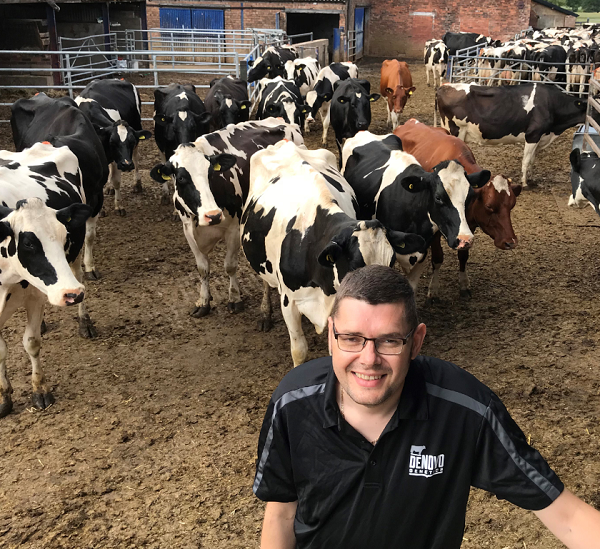The power of breeding for fertility
Thursday, 14 March 2024
Breeding for fertility has been a top priority for Andy Rutter for over 20 years. This has reaped rich rewards on his family’s Clayhanger Hall Farm in Cheshire.
This includes increasing the herd’s pregnancy rate to a massive 33% (12-month rolling average), reducing the age at first calving to 23.5 months and cutting the calving index to 370 days.
All this has been achieved while production has risen to around 10,000 litres at 4.4% fat and 3.4% protein (2x) across the 390-head, year-round calving herd.
Andy says milk sold per cow per year is the key performance indicator which keeps the farm in business.
“And there’s nothing that drives milk production like fertility and having fresh cows.”
He applied this philosophy to his former role at Genus ABS, where he worked for 18 years, including as European breeding manager, until he returned to run the family tenancy in 2018.
He said as soon as the Fertility Index (FI) was introduced by AHDB in 2005, it became a major selection trait for the bulls he used and bred, second only to the more holistic Profitable Lifetime Index (£PLI).
“I spent a lot of time promoting double-digit FI bulls and was so pleased to see the national decline in fertility gradually start to improve.”
He thinks producers were nervous about selecting high FI at first because fertility was seen as a low heritability trait.
“But low heritability doesn’t mean there’s a lack of genetic variation from which to select nor that good genetic progress for the trait can’t be made,” he says.
He believes the early reluctance to use FI was compounded by the knowledge that fertility and milk production were antagonistic traits.
“And then along came curve-benders, like Oman, who could deliver both.”
Now he says it’s possible to ‘have your cake and eat it’, with a plethora of high fertility and high production sires.
“It’s fantastic to see what the Holstein breed has achieved and how the vast majority of commercial producers did buy into this trait, and how they have lifted the fertility of the national herd.”
Back at Clayhanger, he applied his belief in FI across the herd when he returned in 2018, which has helped achieve its impressive gains.
As well as the high performance achieved in reproductive traits, he says hormone use has also been slashed.
However, recognising this is not all down to genetics, he praises the farm’s RMS and veterinary teams, and he says strict protocols exist for problem and difficult-calving cows.
Throughout his time back home, he has used the AHDB Herd Genetic Report which ranks his cows for many genetic traits, including FI, and tracks their genetic progress over time.
“Our milking herd now runs at +2.3 FI, while the youngstock are at +5.1. We’ve worked out that each FI point cuts about two days off calving interval, which is far better than the theory predicts.”
This is also reflected in culling data, which shows barren cows, which were the primary reason for culling in 2018, are now down to third or fourth place.
Today, gains made in health and fertility have allowed selection criteria to be broadened, and Andy has turned his attention to measures of efficiency.
“£PLI has always been the mainstay of our selection as it’s a fantastically balanced index. It does a lot of the legwork for me and then I look at how I can tweak it to get what I want, including kg fat and protein rather than percentages for our Muller liquid contract.
“But now we are bringing EnviroCow into play to improve our feed efficiency, as well as our carbon footprint,” he says.
 AHDB
AHDB

